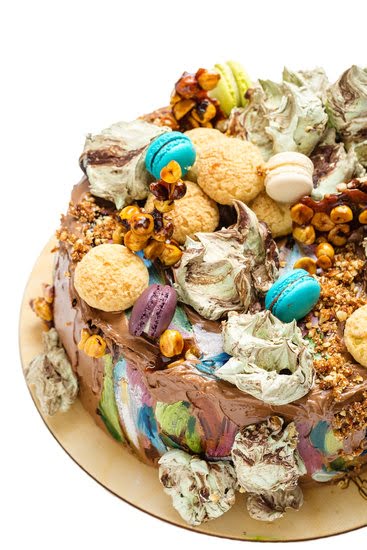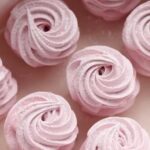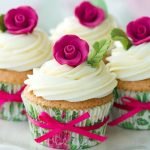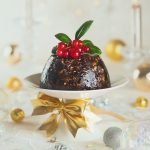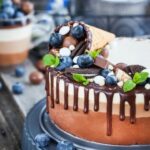Are you looking to elevate your cake decorating skills? If so, mastering the art of making buttercream is essential. In this article, we will explore how to make buttercream for cake decorating, from the basic ingredients needed to troubleshooting common issues and achieving the perfect consistency. Whether you are a beginner or a seasoned baker, understanding the different types of buttercream and how to use it as a versatile decorating tool will take your cakes to the next level.
Buttercream is a classic frosting made from butter, powdered sugar, and flavorings that is beloved by bakers and pastry chefs alike. Its smooth texture and creamy consistency make it the ideal medium for creating intricate designs and decorations on cakes. Whether you are piping delicate flowers or adding borders and rosettes, buttercream allows for endless creativity in cake decorating.
In this section, we will delve into what exactly buttercream is and why it is the go-to frosting for cake decorating. We will discuss its versatility, stability, and ability to hold intricate shapes – making it an indispensable tool for both home bakers and professionals alike. Additionally, we will explore the different types of buttercream such as American, Swiss, Italian, and French buttercream to help you understand their unique characteristics and applications in cake decorating.
Types of Buttercream
Buttercream frosting is a versatile and delicious option for cake decorating, and there are several types of buttercream to choose from. Each type has its own unique qualities and flavors, making it important to understand the differences between American, Swiss, Italian, and French buttercream.
American buttercream is the simplest and most commonly used type of buttercream. It is made with powdered sugar, butter, vanilla extract, and milk or cream. This type of buttercream is quick and easy to make, making it a popular choice for home bakers and beginners. It has a sweet flavor and a light texture, making it perfect for piping decorations and frosting cakes.
Swiss meringue buttercream is made by heating egg whites and sugar over a double boiler until the sugar dissolves before whipping into stiff peaks. Softened butter is then added gradually along with flavorings like vanilla or other extracts. This type of buttercream has a silky smooth texture and a less sweet taste compared to American buttercream.
Italian meringue buttercream involves pouring hot sugar syrup over whipped egg whites before adding softened butter in small increments until smooth. This process results in a luxurious fluffy texture that holds up well in warm temperatures, making it ideal for decorating wedding cakes or outdoor events.
French buttercream is similar to Italian meringue but includes egg yolks instead of whites. The addition of yolks gives French buttercream a rich yellow color and a slightly denser texture with a decadent taste that some consider reminiscent of custard.
Ingredients Needed
Buttercream Ingredients
To make a classic buttercream for cake decorating, you will need a few key ingredients. The main component is, of course, butter. It’s important to use unsalted butter that has been softened to room temperature for easier incorporation with the other ingredients. Powdered sugar, also known as confectioner’s sugar, is used to sweeten the buttercream and give it structure. Vanilla extract adds flavor to the frosting, while milk or heavy cream helps achieve the desired consistency.
Other Optional Ingredients
In addition to the basic ingredients, there are several optional components that can be added to enhance the flavor and texture of your buttercream. For example, a small amount of salt can help balance out the sweetness of the frosting. For a richer flavor, consider using vanilla bean paste instead of vanilla extract. You can also experiment with different extracts such as almond or citrus for unique variations.
Vegan Alternatives
For those who prefer not to use dairy products, there are alternative ingredients that can be used to make a vegan buttercream. Plant-based margarine can be substituted for butter, and non-dairy milk such as almond or soy milk can be used in place of regular milk or cream. Be sure to check the consistency and flavor as you go along and adjust accordingly when using these substitutions.
By understanding all the necessary ingredients and potential substitutes, you’ll be better equipped to make delicious buttercream for cake decorating that suits your taste preferences and dietary restrictions.
Step-by-Step Instructions
Buttercream frosting is a versatile and delicious addition to any cake or baked good. Whether you are a beginner baker or an experienced decorator, knowing how to make buttercream for cake decorating is an essential skill. This section will provide you with a comprehensive guide on creating buttercream from scratch, along with some helpful tips and tricks for achieving the perfect consistency.
To start making buttercream, gather the necessary ingredients: unsalted butter, powdered sugar, vanilla extract, and milk. The key to successful buttercream is using high-quality ingredients as they will directly impact the taste and texture of your frosting. It’s important to ensure that your butter is at room temperature before beginning the process, as this will allow it to cream smoothly with the other ingredients.
Next, begin by beating the softened butter in a mixing bowl until it becomes creamy and pale in color. Gradually add in the powdered sugar, one cup at a time, mixing well after each addition. This step ensures that your buttercream will be smooth and free of lumps. Once all of the powdered sugar has been incorporated, add in the vanilla extract and a few tablespoons of milk to achieve your desired consistency.
For those who are looking to experiment with flavor variations, consider incorporating different extracts or even fruit purees into your buttercream. Chocolate lovers can also add cocoa powder for a rich chocolate flavor. Additionally, coloring techniques using gel food colors can transform your buttercream into vibrant hues perfect for any celebration cake.
| Ingredient | Recommended Brand |
|---|---|
| Unsalted Butter | Land O’Lakes |
| Powdered Sugar | Dominos |
| Vanilla Extract | Nielsen-Massey Madagascar Bourbon Pure Vanilla Extract |
| Milk | Any preferred brand |
Flavor Variations
When it comes to cake decorating, buttercream is a versatile frosting that can be flavored in a variety of ways to suit different tastes and preferences. In this section, we will explore creative ideas for flavoring buttercream, such as chocolate, espresso, citrus, and raspberry. These flavors can add depth and complexity to your buttercream, taking your cake decorating to the next level.
Chocolate Buttercream
One popular flavor variation for buttercream is chocolate. To make chocolate buttercream, simply add cocoa powder or melted chocolate to your basic buttercream recipe. The result is a rich and decadent frosting that pairs perfectly with chocolate cakes or as a filling for macarons and whoopie pies.
Espresso Buttercream
For coffee lovers, espresso buttercream is a delicious option. Simply dissolve instant espresso powder in a small amount of hot water and add it to your buttercream along with a splash of vanilla extract. The result is a delightful mocha-flavored frosting that is perfect for pairing with chocolate or vanilla cakes.
Citrus Buttercream
If you’re looking for a refreshing and tangy flavor, consider adding citrus zest or juice to your buttercream. Lemon, lime, or orange zest can add bright and zesty notes to your frosting, making it perfect for spring and summer desserts.
Raspberry Buttercream
For a fruity twist, consider incorporating raspberry puree into your buttercream. Simply blend fresh or frozen raspberries until smooth, then strain the mixture to remove the seeds. Add the raspberry puree to your buttercream for a vibrant pink color and a burst of sweet-tart flavor.
These are just a few examples of how you can get creative with flavoring your buttercream for cake decorating. Whether you’re looking for something rich and indulgent like chocolate or something light and fresh like citrus, there’s no limit to the flavor combinations you can explore when working with buttercream. Experiment with different flavors and find unique combinations that will elevate your cake decorating creations.
Coloring Techniques
When it comes to cake decorating, coloring buttercream is a fun and essential part of the process. Using gel food colors allows for vibrant and pastel hues that can elevate the overall look of your cake. Here’s how to color buttercream using gel food colors:
1. Start with a base: Before adding any color, make sure you have prepared your buttercream frosting according to the recipe or your preferred method.
2. Choose the right gel food colors: Gel food colors are highly concentrated, allowing you to achieve intense shades without altering the consistency of the buttercream. Opt for gel food colors in various shades to mix and create custom colors.
3. Gradually add color: It’s important to add gel food colors gradually to achieve the desired hue. Start with a small amount, mix it into the buttercream, and assess the color before adding more. This approach ensures that you have better control over the final shade.
4. Mix thoroughly: Use a spatula or mixer to incorporate the gel food color evenly into the buttercream. Make sure there are no streaks or uneven patches of color in the frosting.
5. Achieve pastel hues: If you’re looking to create pastel tones, start with a small amount of white buttercream and slowly add tiny drops of gel food color until you reach the desired pastel shade.
By following these steps, you can effectively use gel food colors to achieve vibrant and pastel hues for your buttercream frosting, allowing you to bring your creative cake decorating visions to life.
Troubleshooting
Even for experienced bakers, issues can arise when making buttercream for cake decorating. Two common problems that may occur are grainy texture and melting. However, with the right techniques and adjustments, these issues can be easily rectified.
Grainy Texture:
One of the most frustrating issues when making buttercream is ending up with a grainy texture. This can happen when the powdered sugar is not fully incorporated into the butter, resulting in a lumpy and unappealing frosting. To avoid this problem, ensure that the butter is at room temperature before starting and beat it until it is light and fluffy before adding the powdered sugar. Additionally, sifting the powdered sugar beforehand can help to prevent clumps in the buttercream.
Melting:
Another common problem is buttercream melting, particularly in warm or humid environments. This can lead to a frosting that is too runny to work with or loses its shape on the cake. To address this issue, try reducing the amount of liquid used in the recipe or increasing the ratio of fat (butter) to sugar for a sturdier consistency. Refrigerating the buttercream for a short period before using it can also help firm it up if melting becomes an issue.
It’s important to remember that troubleshooting these problems may require some trial and error to find what works best for your specific environment and ingredients. With practice and patience, you’ll soon become adept at recognizing and fixing any issues that arise when making buttercream for cake decorating.
Decorating Tips
When it comes to cake decorating, using buttercream to pipe borders, rosettes, and other decorative elements can take your creations to the next level. The versatility of buttercream allows for a wide range of designs and styles, making it a favorite choice among bakers and decorators. Whether you’re a beginner or an experienced baker, mastering the art of piping with buttercream can elevate the presentation of your cakes.
To start, ensure that your buttercream is at the right consistency for piping. It should be smooth and creamy but firm enough to hold its shape.
If the buttercream is too soft, it will be difficult to pipe intricate designs, while if it’s too stiff, it may not come out smoothly. To achieve the perfect consistency, follow the step-by-step instructions for making buttercream and adjust as needed by adding more powdered sugar for stiffness or milk for softness.
One popular technique for using buttercream to decorate cakes is piping borders. This involves using a piping bag fitted with a border tip to create a neat and polished edge around the top and bottom edges of the cake. From simple lines to elaborate ruffles or shells, there are countless border designs that can add a professional touch to any cake.
Experiment with different border tips and practice consistently applying pressure on the piping bag to achieve even lines. Additionally, practice makes perfect when it comes to creating rosettes and other decorative elements with buttercream, so don’t be afraid to experiment and hone your skills. With time and patience, you’ll be able to use buttercream to create stunning decorations that will impress your friends and family.
Remember that practicing these techniques takes time but getting creative with your cake decorating endeavors using buttercream can lead you down an exciting path of exploring different design possibilities. Whether you’re aiming for simple elegance or bold creativity in your cake decorations, mastering these techniques will help you achieve beautifully decorated cakes that are sure to impress.
Conclusion
In conclusion, learning how to make buttercream for cake decorating opens up a world of creative possibilities for any aspiring baker or pastry chef. From the basic American buttercream to the more complex Swiss, Italian, and French variations, there are endless opportunities to experiment with flavor, color, and texture. By mastering the art of making buttercream from scratch, you can elevate your cakes and other baked goods to new levels of deliciousness and visual appeal.
The key to successful buttercream cake decorating lies in understanding the fundamental ingredients and techniques involved. Whether it’s achieving the perfect consistency, adding unique flavors like chocolate or raspberry, or mastering coloring techniques for vibrant and pastel hues, attention to detail is essential. Additionally, being aware of common issues that may arise when making buttercream – such as grainy texture or melting – will help troubleshoot any potential problems that could occur during the process.
Ultimately, as you embark on your buttercream cake decorating journey, don’t be afraid to push the boundaries of creativity. Experiment with different piping techniques, try out unconventional flavor combinations, and let your imagination run wild when it comes to designing decorative elements for your cakes.
With a solid foundation in how to make buttercream for cake decorating and a willingness to think outside the box, the possibilities are truly endless. So go ahead – get inspired and start turning your sweet confections into works of edible art.
Frequently Asked Questions
What Buttercream Is Best for Decorating Cakes?
The best buttercream for decorating cakes is typically Swiss meringue buttercream. It has a smooth and creamy texture, making it easy to work with for intricate designs and piping.
What Is the Best Buttercream for Beginners?
For beginners, the best buttercream to start with is American buttercream. It’s simple to make and has a sweet taste that most people enjoy. It’s also forgiving and easy to correct if mistakes are made.
What Is the Best Smooth Buttercream for Cake Decorating?
When it comes to achieving a smooth finish for cake decorating, Italian meringue buttercream is often recommended. Its silky texture allows for easy spreading and gives cakes a professional look.

Welcome to our cake decorating blog! My name is Destiny Flores, and I am the proud owner of a cake decorating business named Cake Karma. Our mission is to provide delicious, beautiful cakes for all occasions. We specialize in creating custom cakes that are tailored specifically to each customer’s individual needs and tastes.

